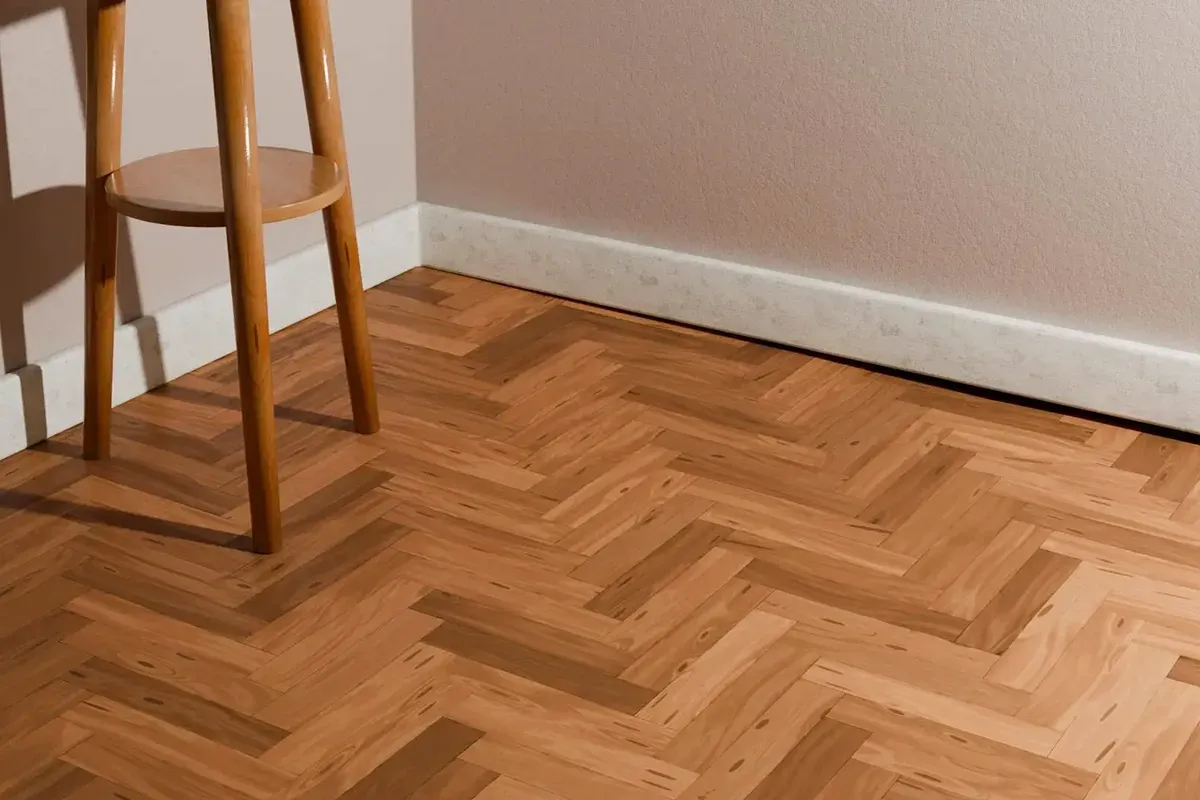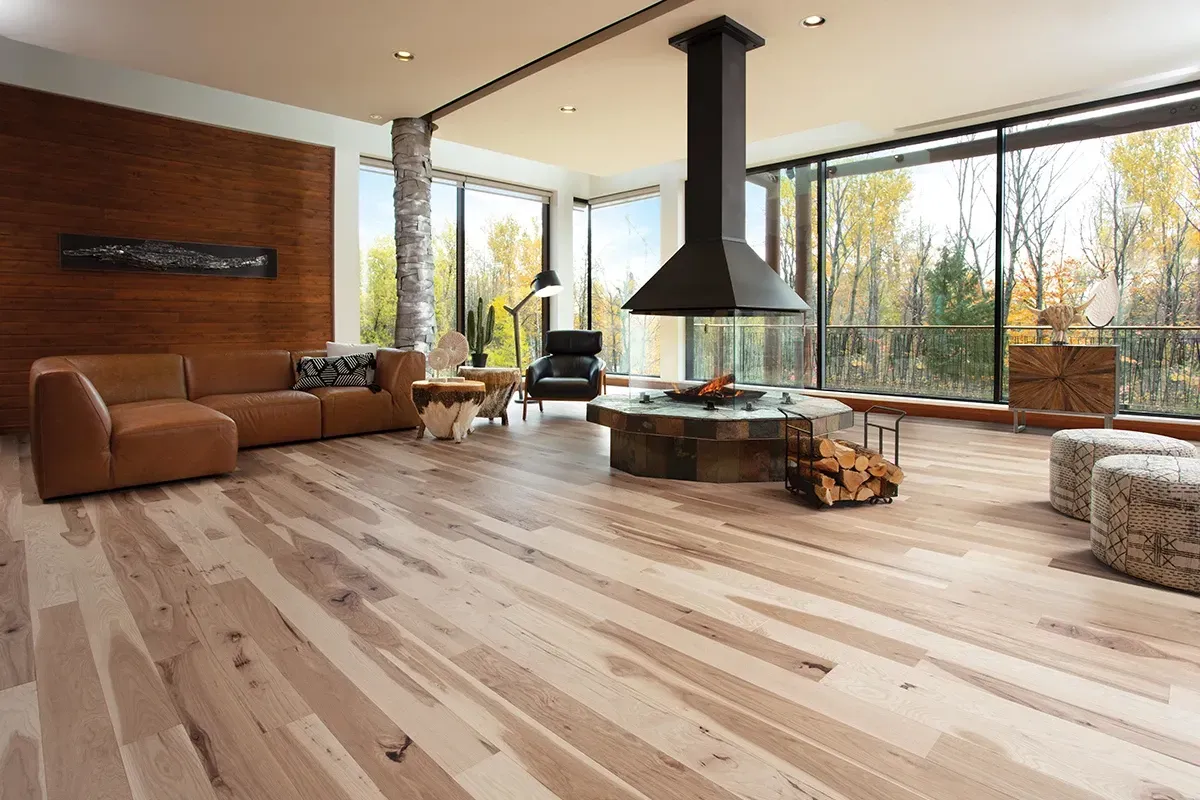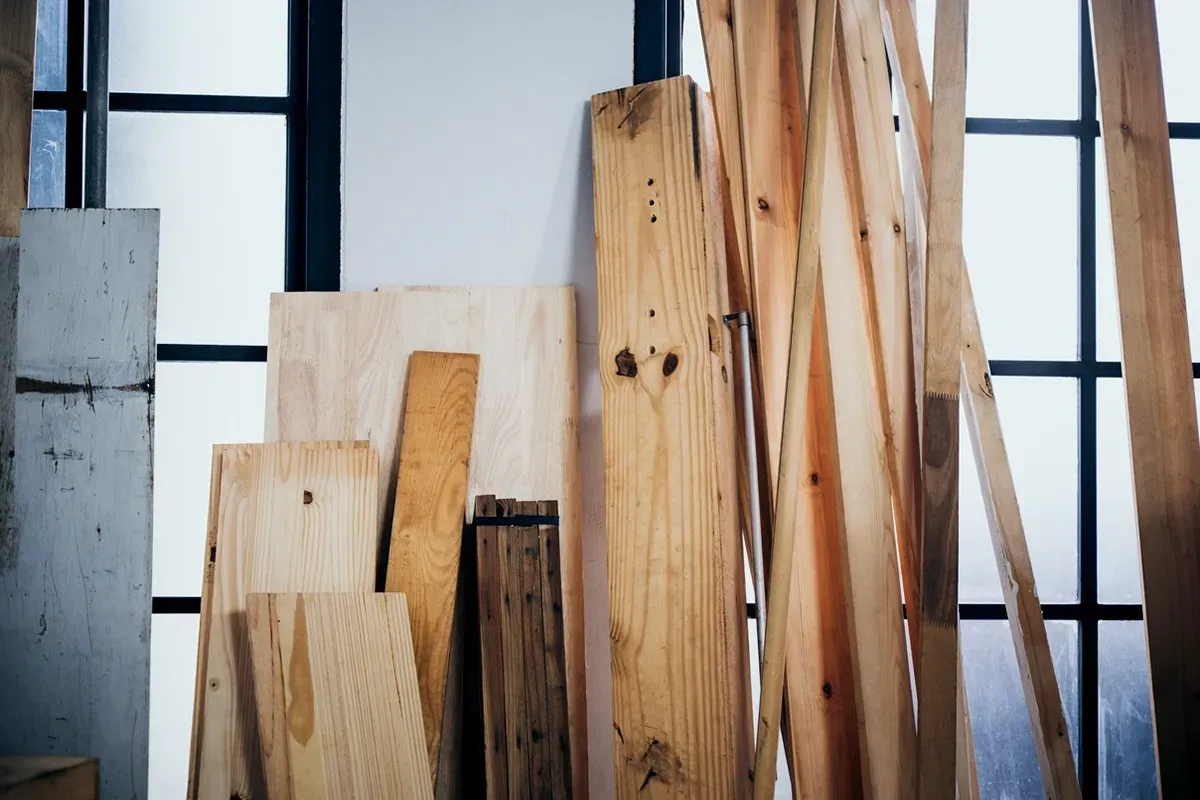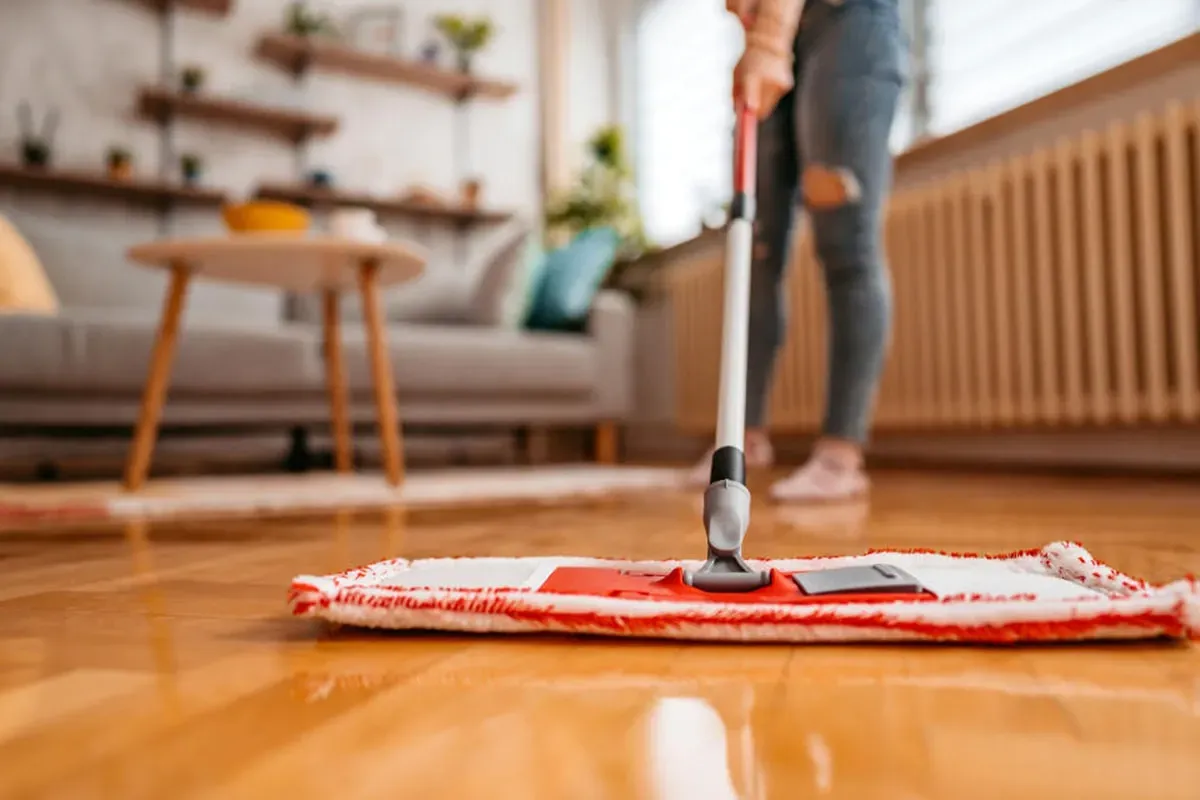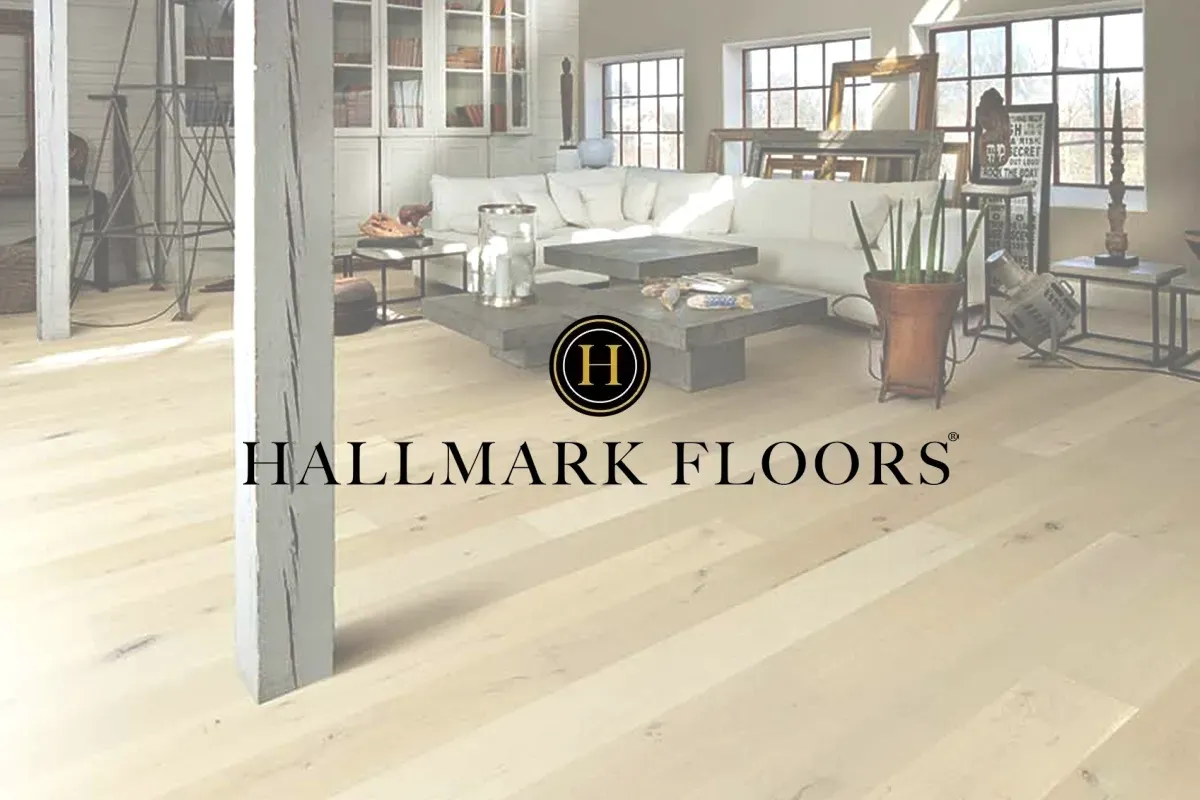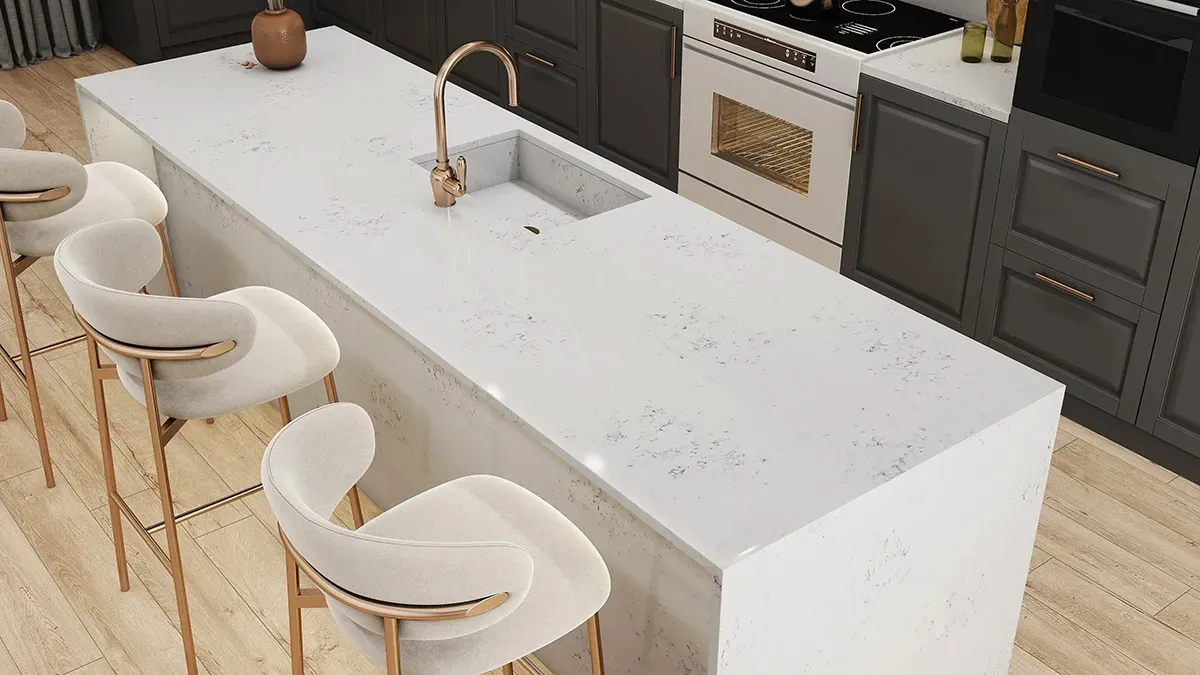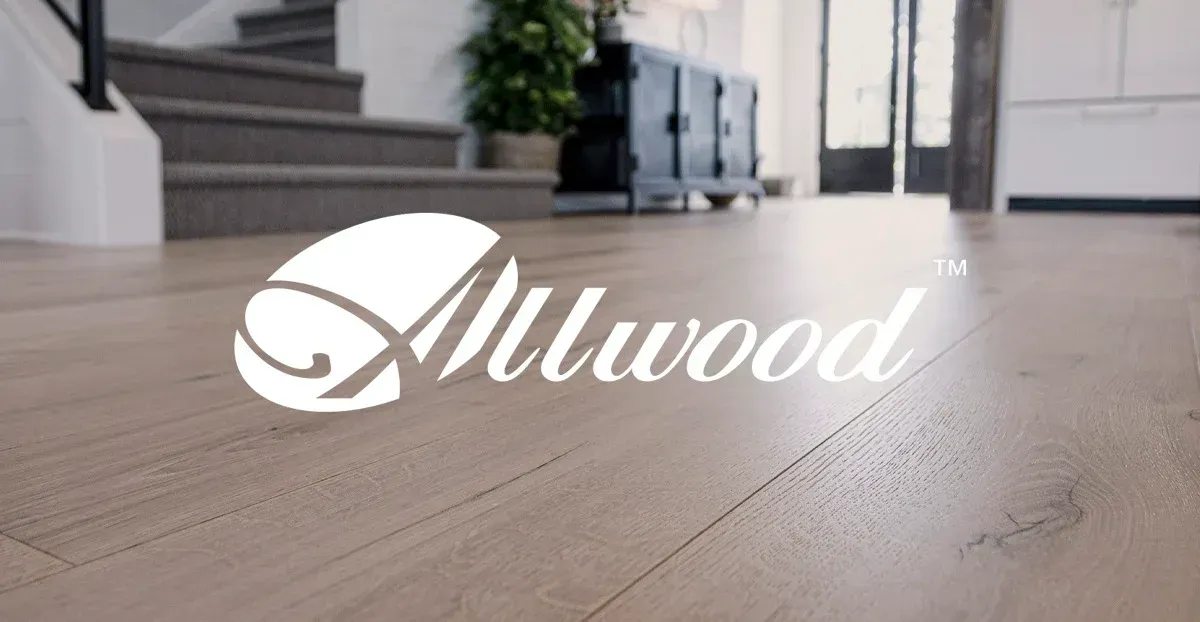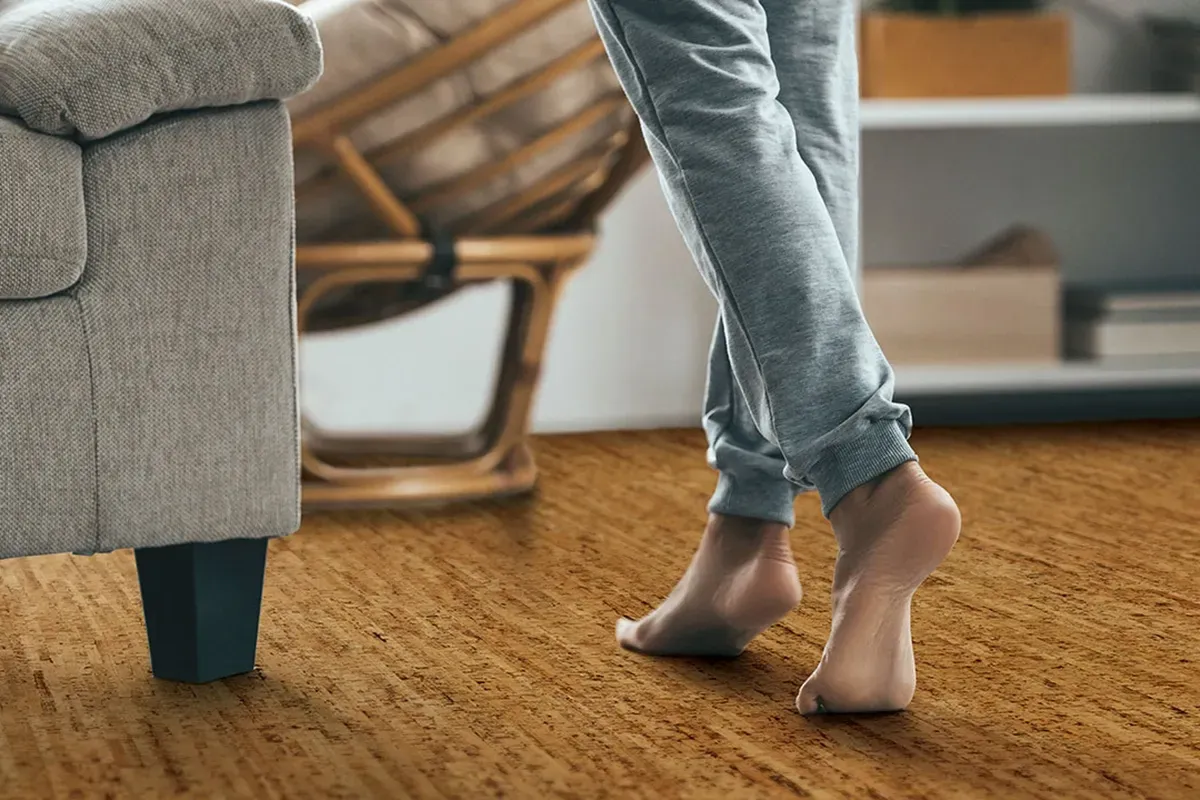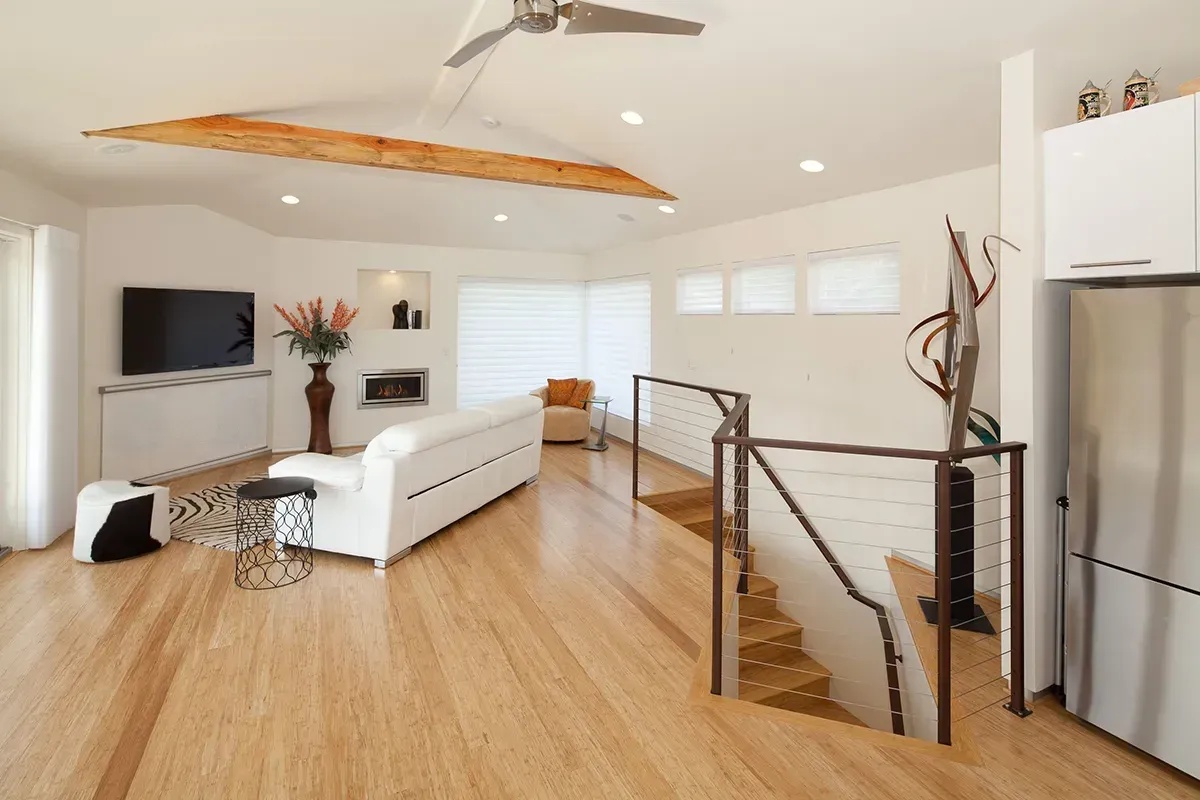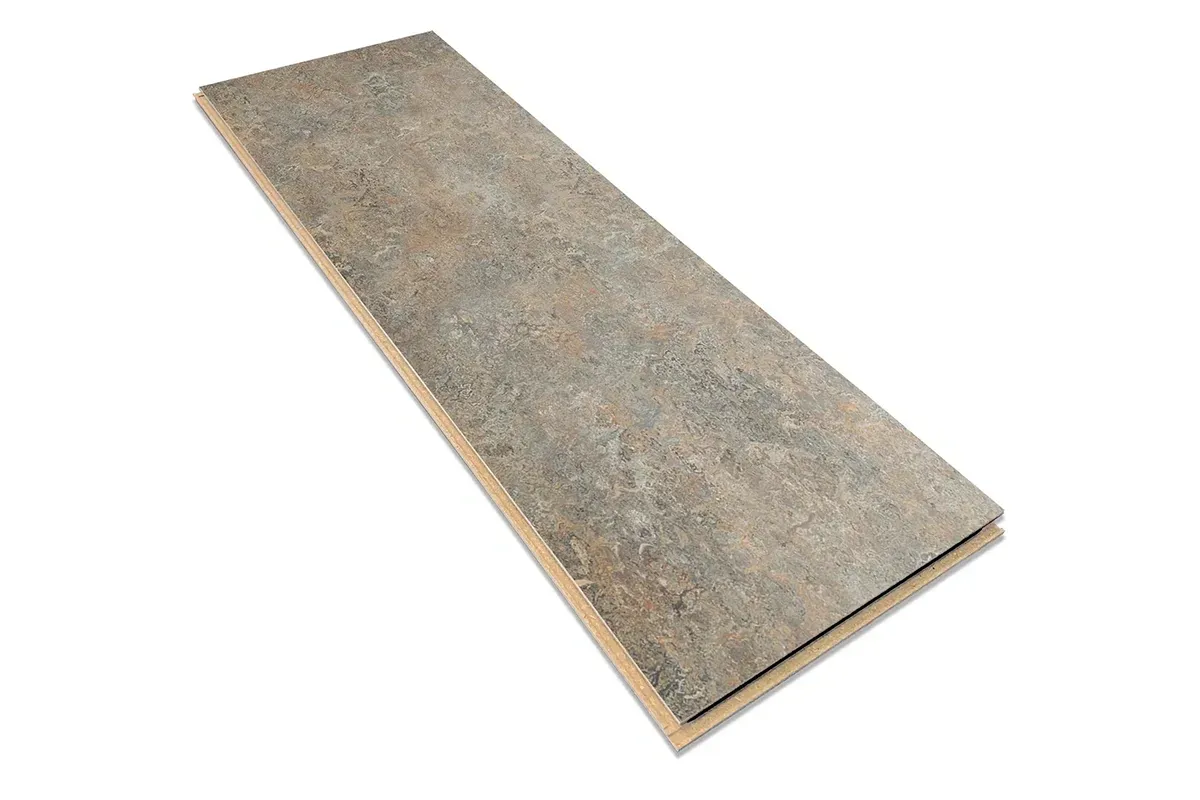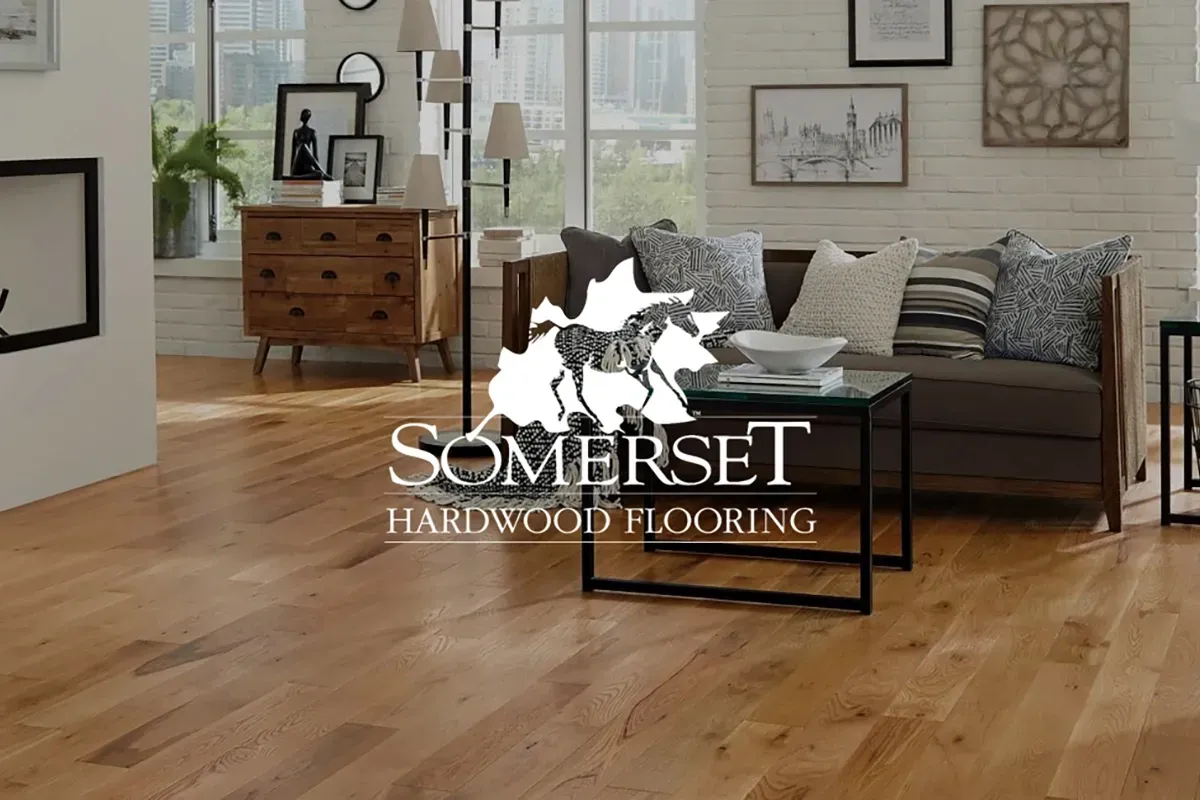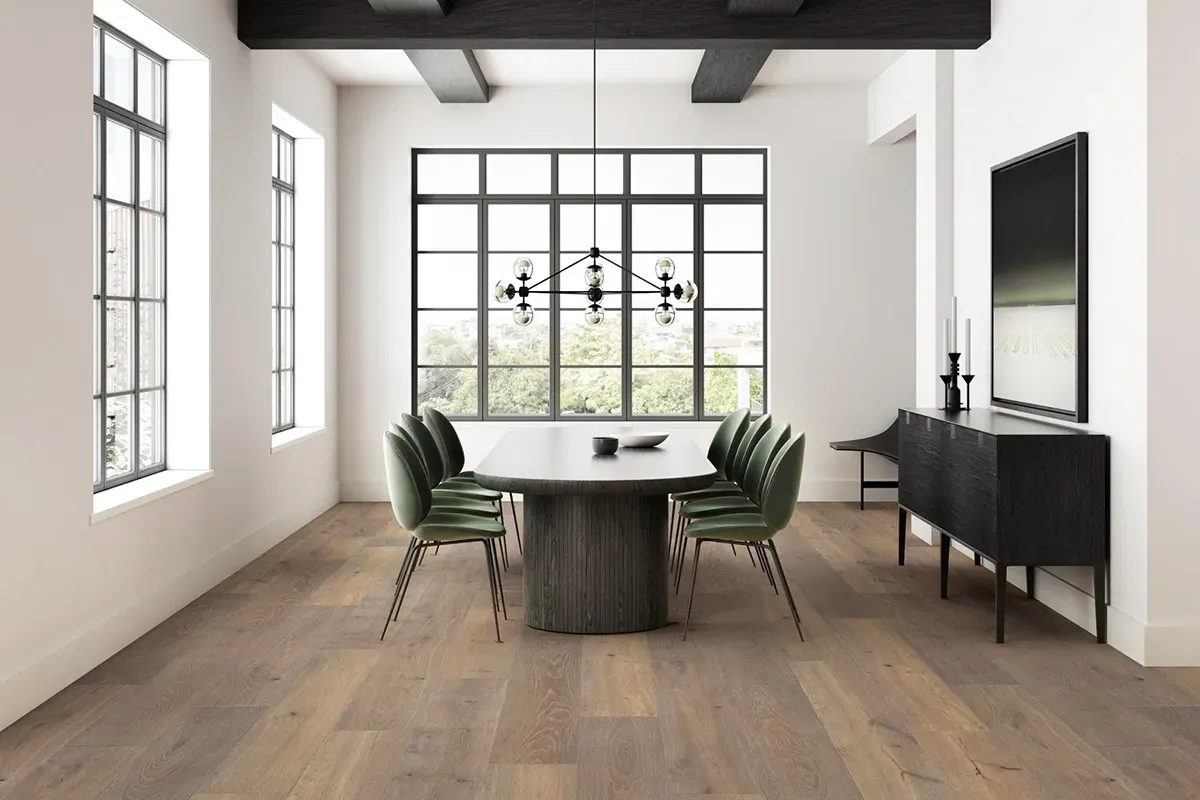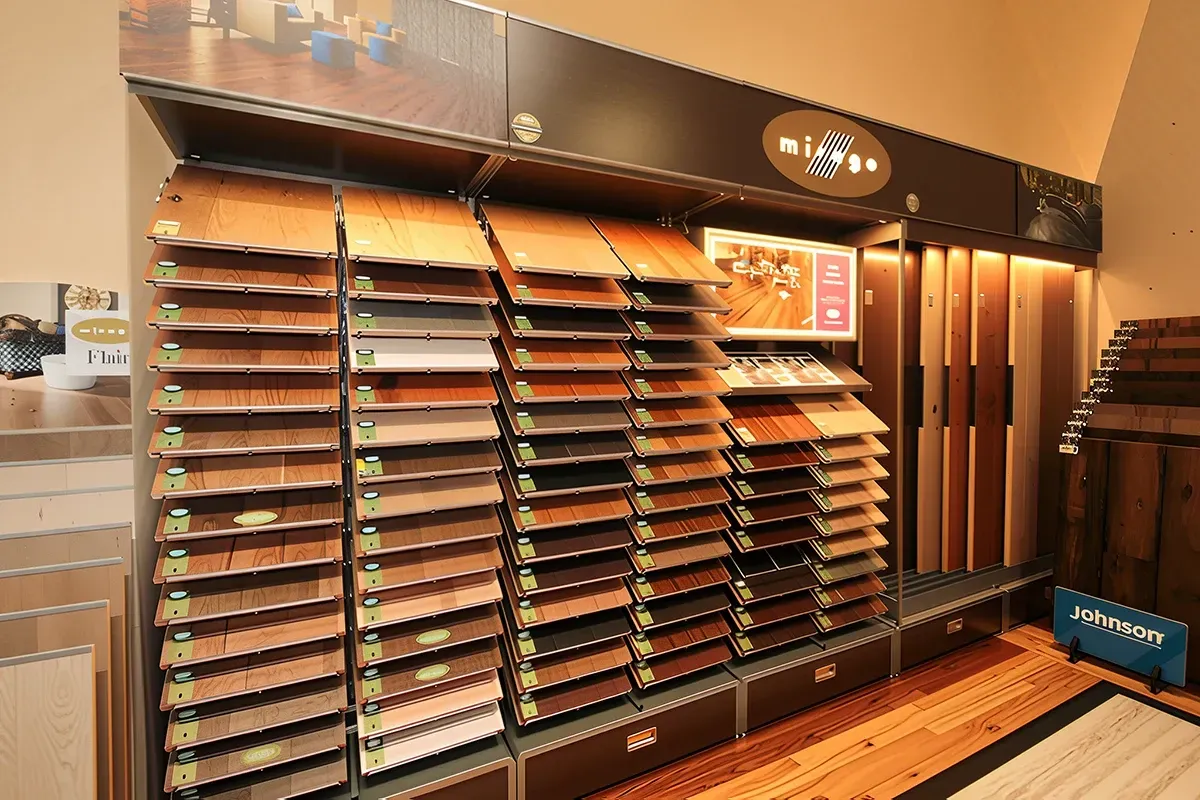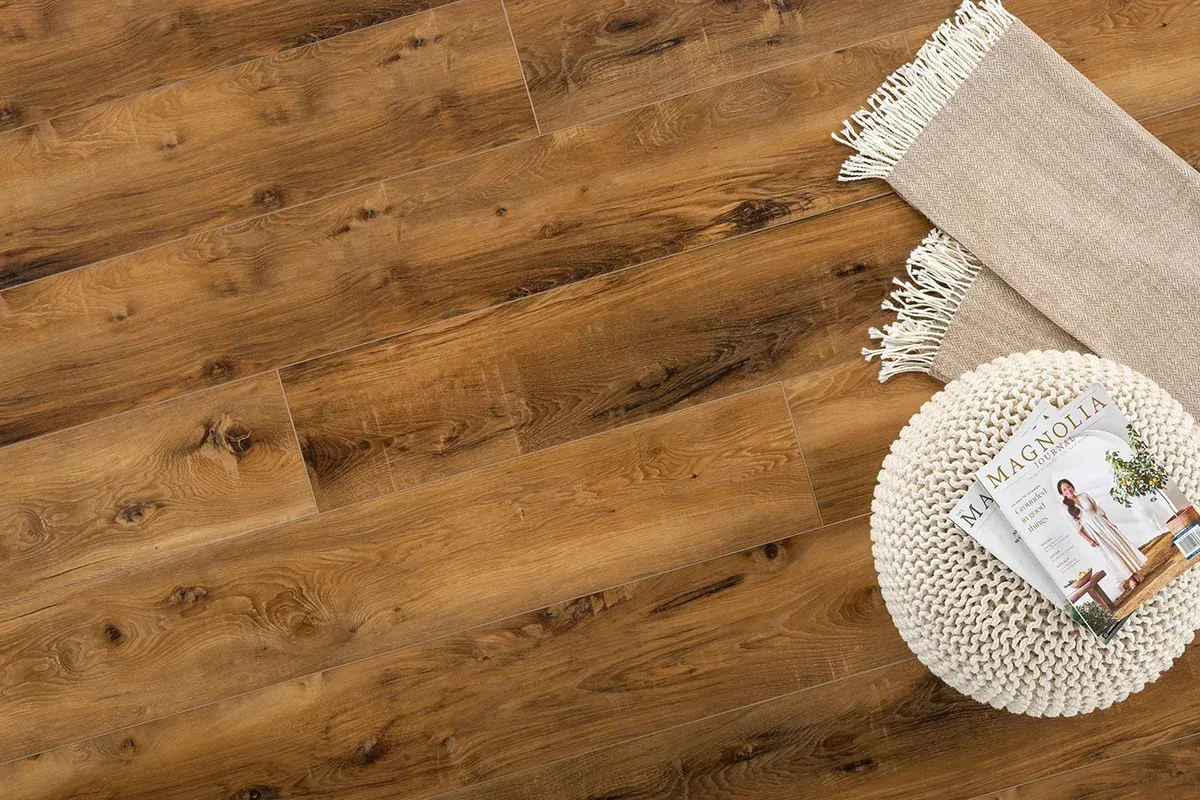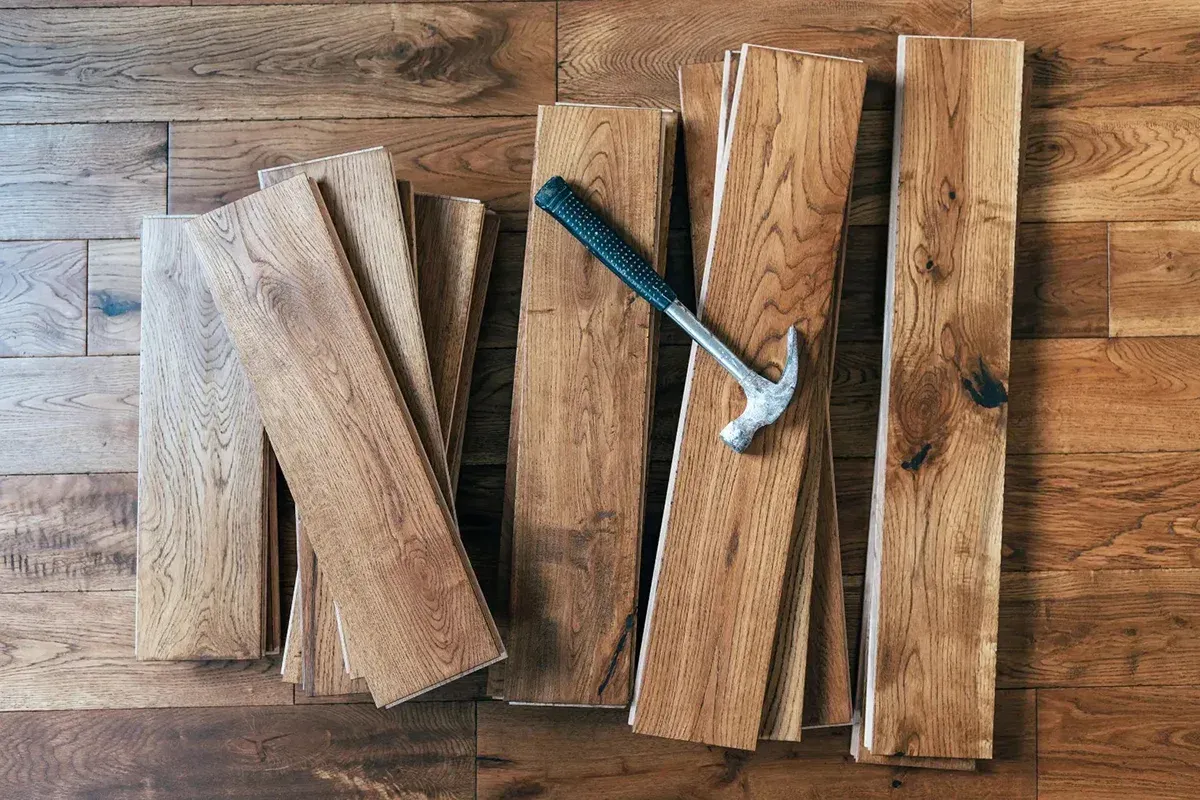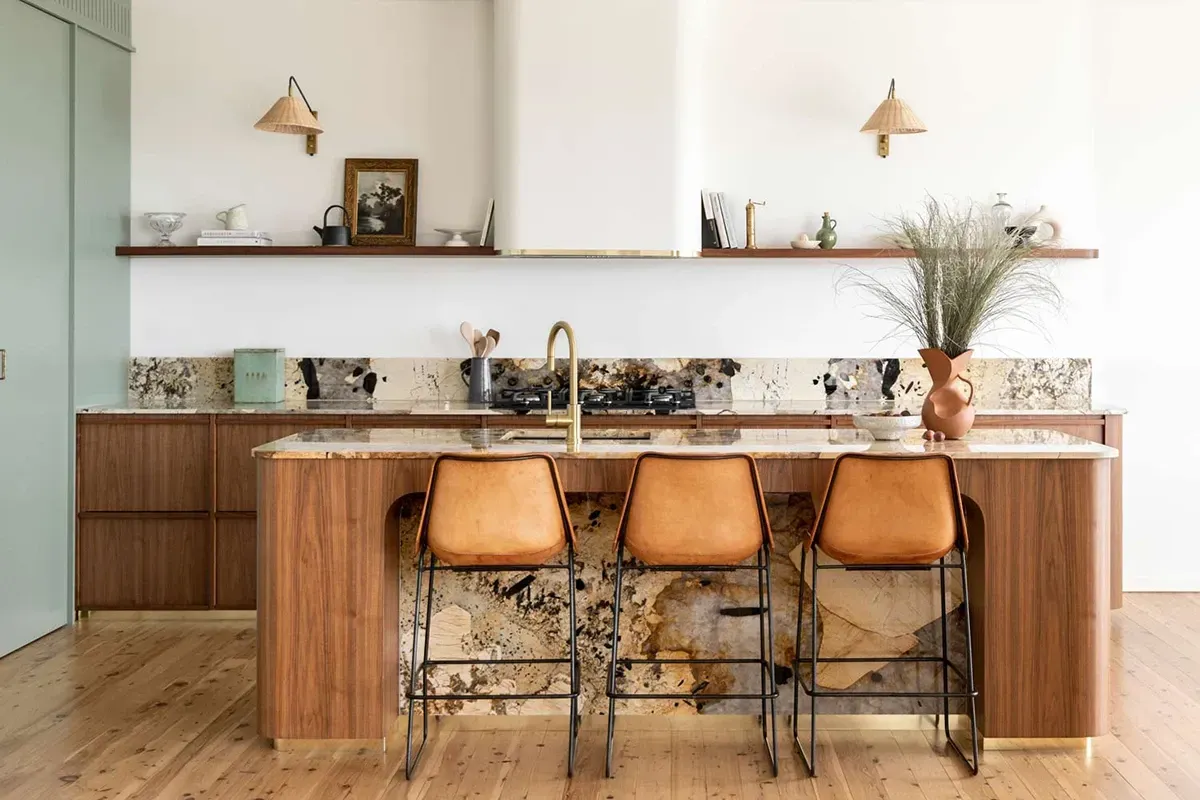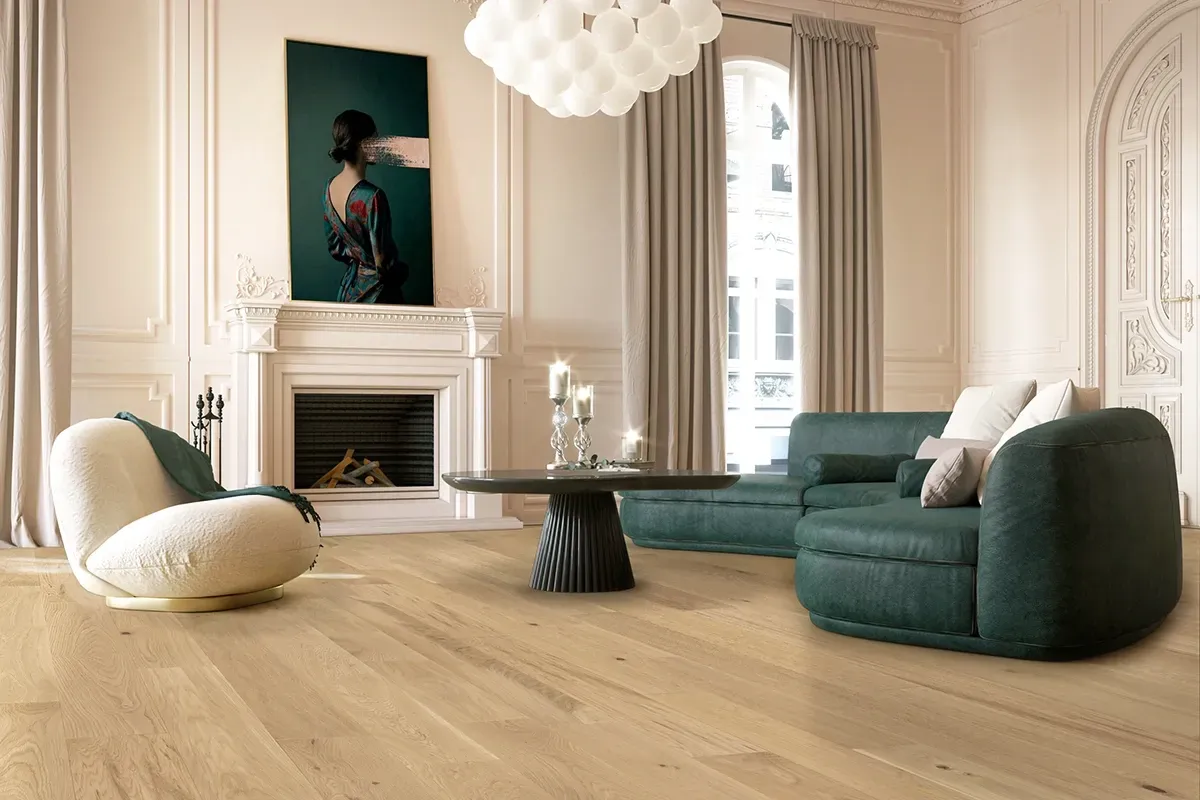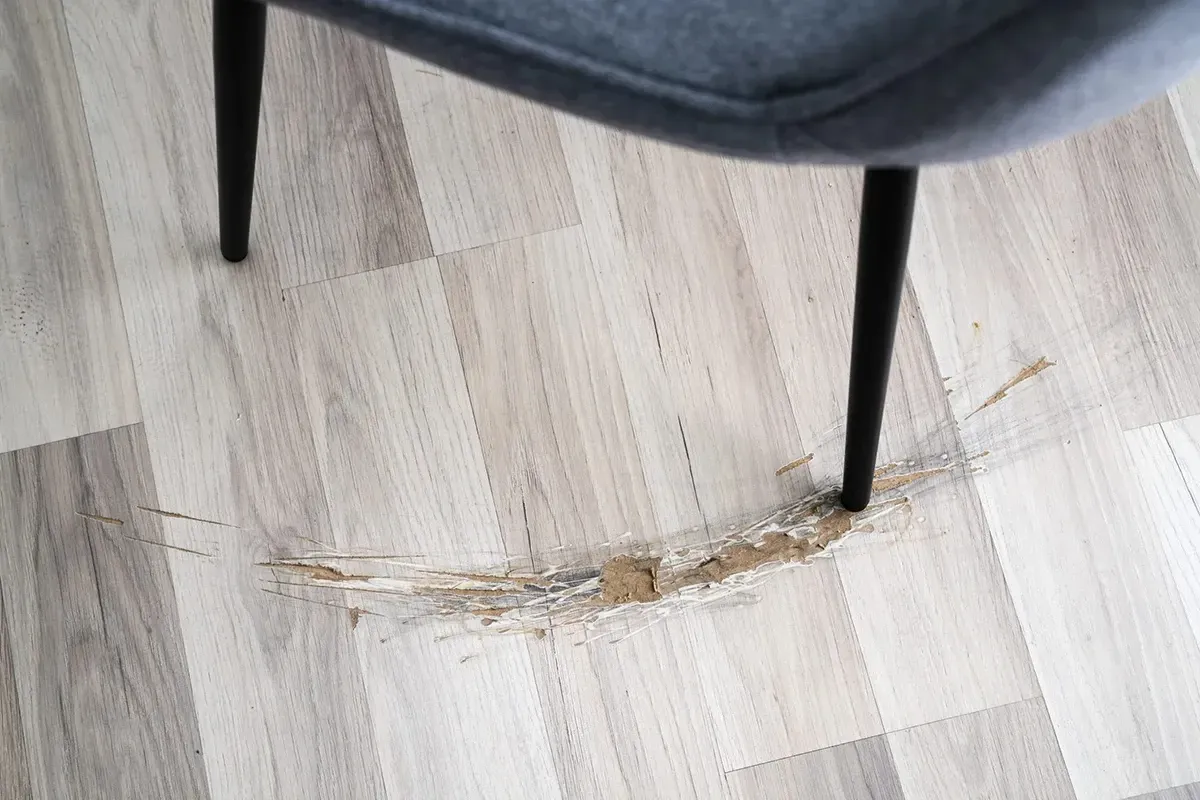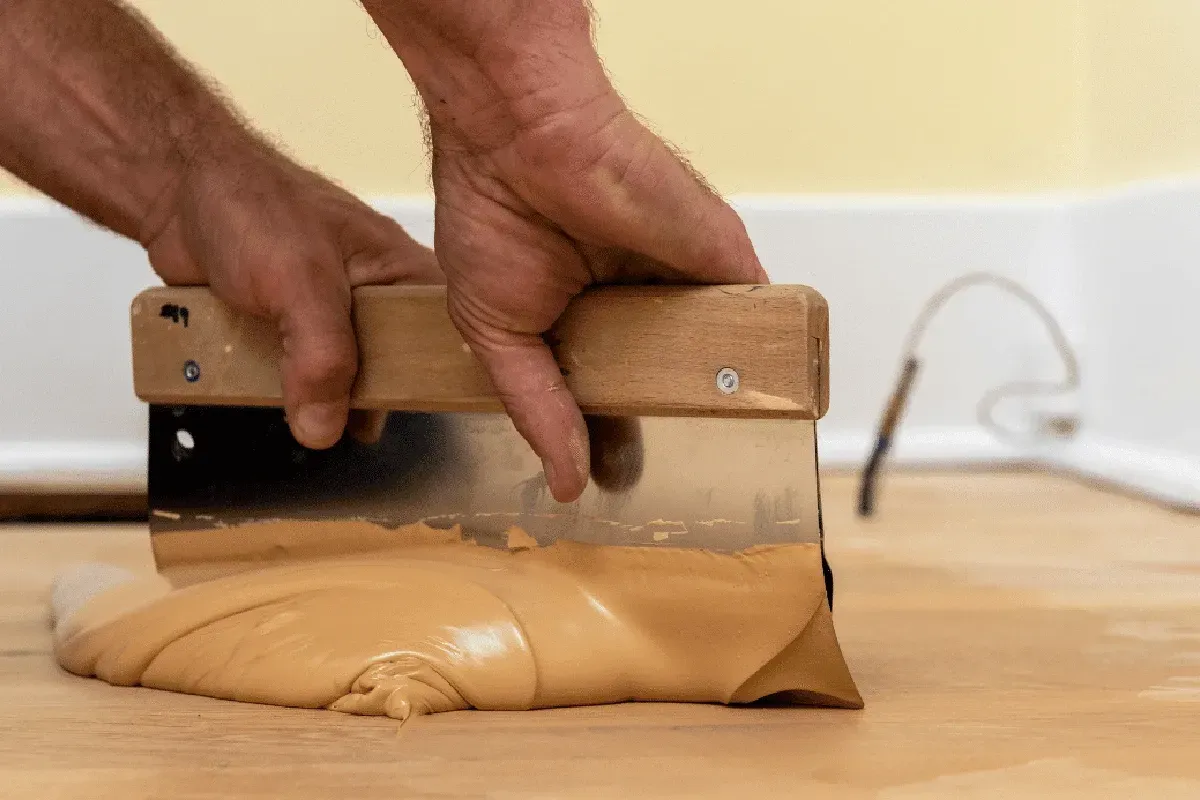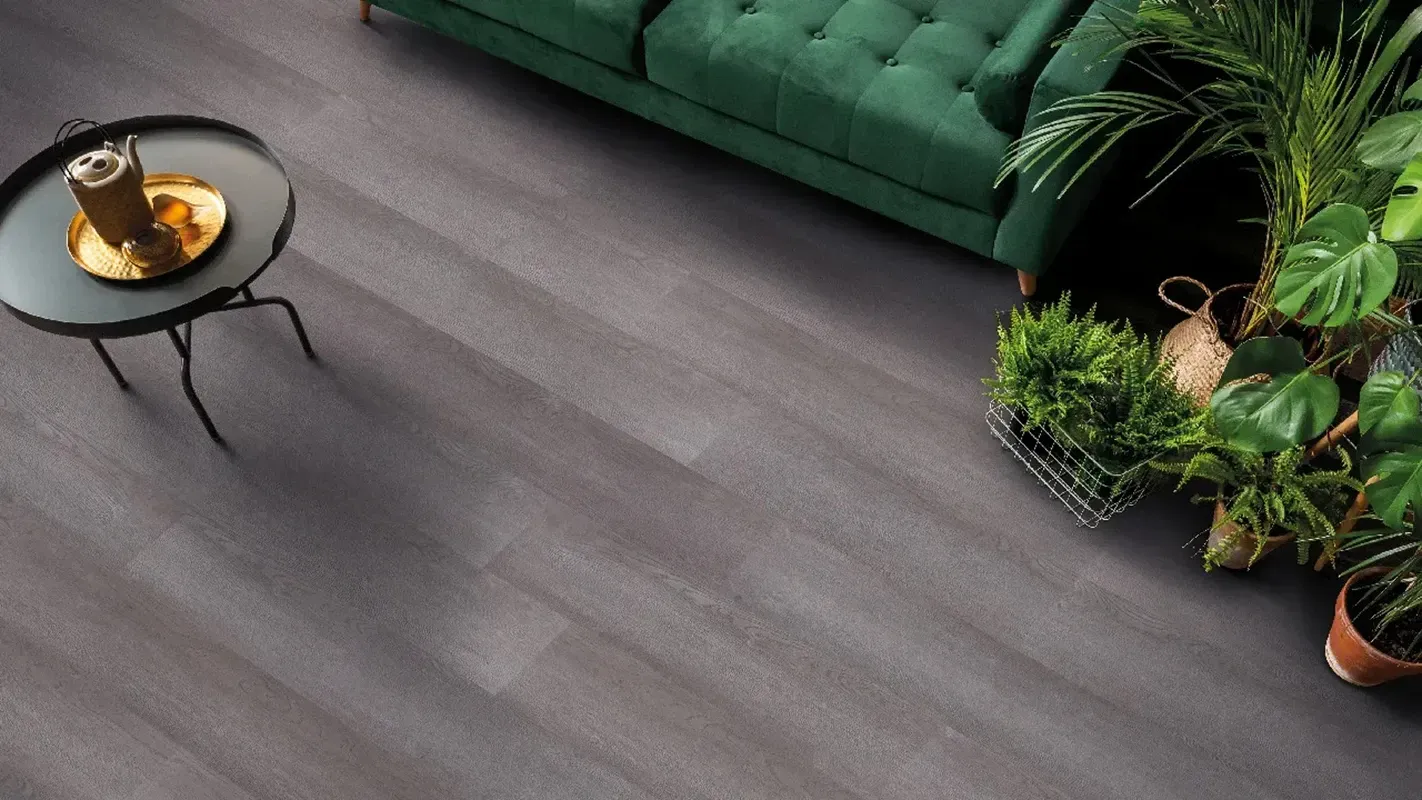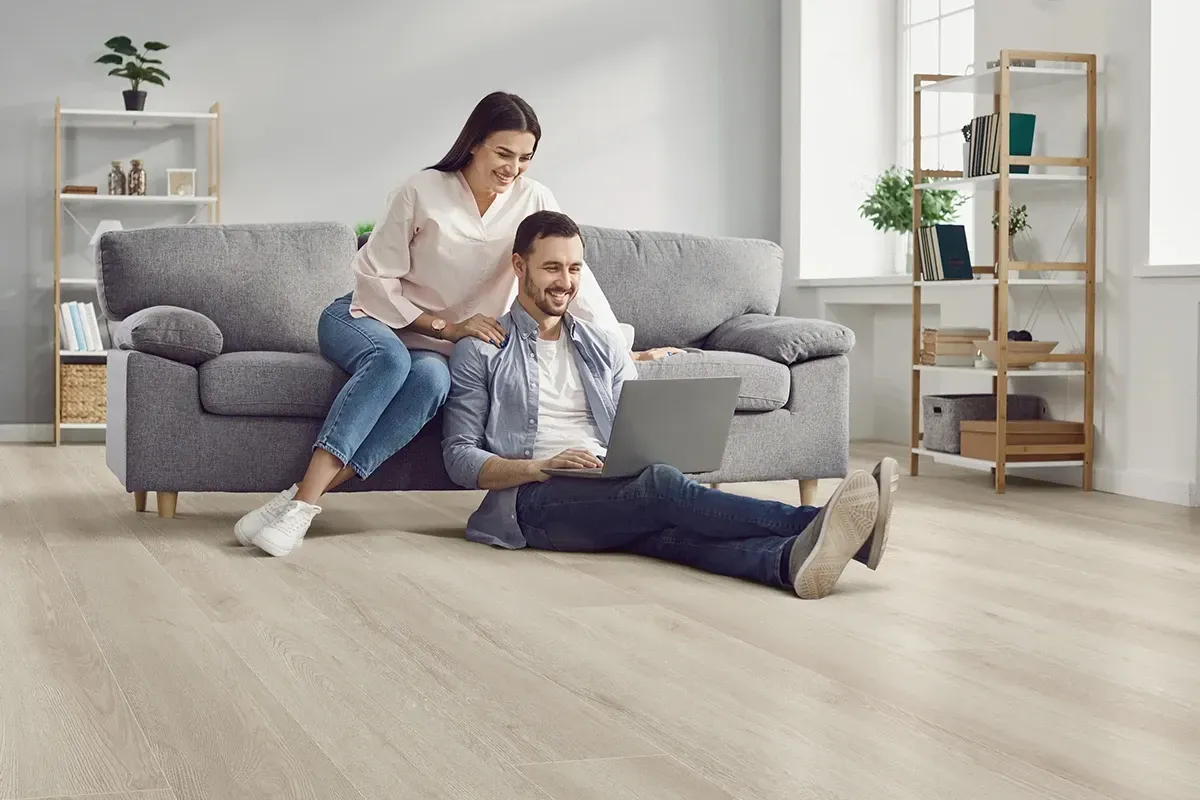Engineered Wood Flooring VS Laminate: A Quick Comparison
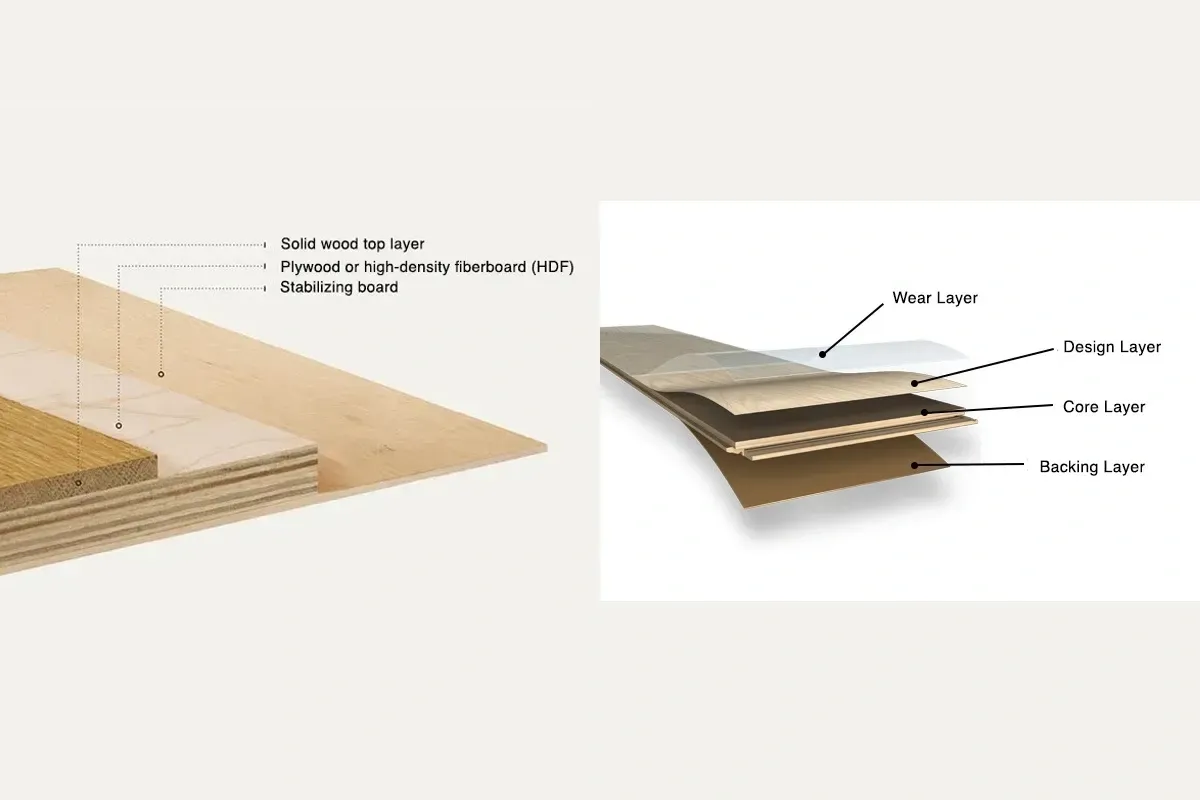
When you’re planning a flooring project, two materials often come up in conversation—engineered wood flooring vs laminate. At first glance, they can look nearly identical. Both can mimic the look of solid hardwood, both come in plank formats, and both are designed to offer a balance of beauty and practicality. But beneath the surface, they are built very differently, which affects how they perform, feel, and age over time.
If you’ve ever wondered whether engineered wood or laminate is the better choice for your home, this guide breaks down everything you need to know. From how they’re made to how they handle moisture, durability, and long-term value, here’s a complete comparison of engineered wood and laminate to help you decide.
TL;DR: When choosing between engineered wood flooring and laminate, the key difference lies beneath the surface. Engineered wood features a real hardwood veneer and offers authentic texture, warmth, and long-term value, while laminate is a fully synthetic product designed for durability, water resistance, and affordability. Engineered wood suits those seeking timeless, natural beauty and potential refinishing; laminate is ideal for busy homes or budget-conscious projects that demand low maintenance and scratch resistance.
What is Engineered Wood Flooring?
Engineered wood is a type of real hardwood flooring that’s been engineered for modern living. It features a surface layer of genuine hardwood—often oak, maple, walnut, or hickory—bonded to several layers of plywood or high-density fiberboard. These core layers are often laid crosswise, giving engineered planks extra stability.
This structure prevents many of the natural movements solid hardwood is known for, such as expansion and contraction from humidity changes. That makes engineered wood ideal for environments where solid hardwood may struggle, like basements, kitchens, or homes with radiant heating.
Because the top layer is real wood, engineered flooring has the same warmth and authentic variation that people love about hardwood. You can see and feel the texture of the grain, and depending on the thickness of the veneer, many engineered products can even be sanded and refinished once or twice during their lifetime. For more information see our detailed comparison of engineered vs solid hardwood.
Planning on making a purchase? Before you do, see our recommendations for the Best Engineered Wood Flooring Brands, and Engineered Hardwood Flooring Brands to Avoid.
What is Laminate Flooring?
Laminate is a fully man-made product designed to replicate the appearance of real wood or stone. It’s built from a core of high-density fiberboard (HDF), topped with a printed image layer and a clear, protective wear layer. That top layer is what makes laminate highly resistant to scratching, fading, and staining.
Laminate flooring doesn’t contain any real wood on the surface—its realistic appearance comes from advanced photographic technology and embossing that adds texture. The result is flooring that can convincingly mimic the look of oak, hickory, maple, or even exotic hardwoods at a fraction of the cost.
Laminate has evolved dramatically in the last decade. Early versions could look artificial, but today’s designs often feature deep textures, beveled edges, and matte finishes that closely resemble genuine wood. Some laminate floors even include waterproof cores, expanding the types of spaces where they can be installed.
Durability and Longevity
Durability is one of the biggest factors homeowners consider when comparing engineered wood flooring vs laminate.
- Engineered Wood: While its top layer is real hardwood and can scratch or dent under heavy wear, engineered wood flooring holds up well under normal residential conditions. With regular care—sweeping, gentle cleaning, and felt pads under furniture—it can last anywhere from 20 to 100 years. The ability to refinish the surface means scratches or wear can be repaired, extending its life considerably.
- Laminate: Laminate’s wear layer is extremely tough and resists scratches, stains, and fading better than almost any other flooring type in its price range. For homes with kids, pets, or heavy traffic,
pet friendly laminate flooring can be a practical option. However, since it cannot be refinished, once the wear layer begins to show signs of age, the only option is to replace the planks. Most quality laminates last between 20 and 85 years with proper care.
Moisture Resistance
One key difference between engineered wood flooring and laminate is how they handle moisture.
- Engineered Wood: It’s more stable than solid hardwood and less prone to
cupping or warping, but it’s still made with a real wood surface. This means it’s not truly waterproof. Small spills are fine if cleaned up quickly, but standing water can cause damage.
Engineered wood is suitable for kitchens, half baths, and below-grade areas if humidity is controlled.
- Laminate: Traditional laminate isn’t waterproof either, but its synthetic surface offers more moisture resistance than natural wood. Newer versions labeled “water-resistant” or “waterproof” can handle spills and moisture better, making them more adaptable for kitchens, basements, or entryways. It’s still best to avoid prolonged exposure to water, since moisture can seep into the seams and cause swelling in the core over time.
Appearance and Style Options
- Engineered Wood: Because the surface is real wood, engineered wood flooring can offer the same depth and authenticity as solid hardwood. Every board is unique, with its own grain, knots, and variations in color. Finish options range from smooth and polished to wire-brushed or hand-scraped textures. This makes engineered wood ideal for those who want the genuine feel of wood underfoot with the added benefit of modern engineering.
- Laminate: Laminate offers nearly endless style possibilities. High-definition printing can replicate not only various wood species but also patterns like chevron or herringbone. Many brands now produce laminate with embossed-in-register (EIR) textures, meaning the surface texture aligns perfectly with the printed grain for a more realistic feel. Laminate can even mimic stone, tile, or concrete looks, providing a wide design range for a fraction of the price of natural materials.
Installation
- Engineered Wood: Installation methods vary by product. Some engineered planks are designed for nail-down or glue-down installation, while others feature click-lock systems similar to laminate. Engineered wood can be installed over most
subfloors, including concrete, and can work well with many
radiant floor heating systems. Professional installation is usually recommended to ensure proper acclimation and performance.
- Laminate: Laminate is known for being one of the easiest floors to install. Most options use a
floating floor system with click-lock edges that snap together without glue or nails. This makes it a great choice for DIYers or for projects where quick installation is important. Laminate can also be installed over existing flooring in many cases, which helps reduce labor costs.
Cost and Value
Cost is often the deciding factor between engineered wood flooring vs laminate.
- Engineered Wood: Generally ranges from
mid- to high-end in price depending on the species and finish. While it costs more upfront, engineered wood tends to add greater resale value because it’s considered real wood. It’s a strong investment for homeowners who want longevity and authenticity.
- Laminate: Offers one of the
best values in flooring. It provides a realistic look at a much lower cost and is less expensive to install. For budget-conscious renovations or rental properties, laminate delivers great visual results for less money.
Comfort and Sound
- Engineered Wood: Feels solid and warm underfoot, more like traditional hardwood. When installed as a floating application and with the right
floor underlayment, it can also reduce noise and provide a bit of cushioning.
- Laminate: Can feel slightly harder and more hollow due to its floating installation method. However, modern underlayments can help improve both sound absorption and comfort.
Environmental Considerations
Many engineered wood products are made with sustainably sourced wood and low-VOC adhesives, making them an environmentally conscious choice. Laminate flooring can also be eco-friendly, particularly brands that use recycled fiberboard and non-toxic finishes. For homeowners concerned about sustainability, it’s worth checking for certifications such as FloorScore or GreenGuard to ensure low emissions and responsible sourcing.
Which is Right for You?
If you love the look and feel of authentic wood and are planning a long-term investment, engineered wood flooring is likely the better choice. It offers the natural beauty of hardwood with improved stability and the potential for refinishing. It’s well-suited for living rooms, bedrooms, dining rooms, and even kitchens where moisture is minimal.
If you prioritize cost, durability, and ease of maintenance, laminate is an excellent option. It can withstand heavy use, resists scratches and fading, and provides a wide range of styles. Laminate is often chosen for basements, rental homes, or busy households that want the look of wood without the upkeep.
Final Thoughts
Both engineered wood flooring and laminate have their advantages. Engineered wood offers lasting beauty and a connection to real hardwood, while laminate provides affordability and convenience without sacrificing style.
At
Rejuvenation Floor & Design, a leading
flooring store in Portland, Oregon, we carry a variety of both
engineered and
laminate flooring options and can help you compare them side by side. Our team can explain how each type performs in real-world conditions and guide you toward a floor that fits your home, lifestyle, and budget.


